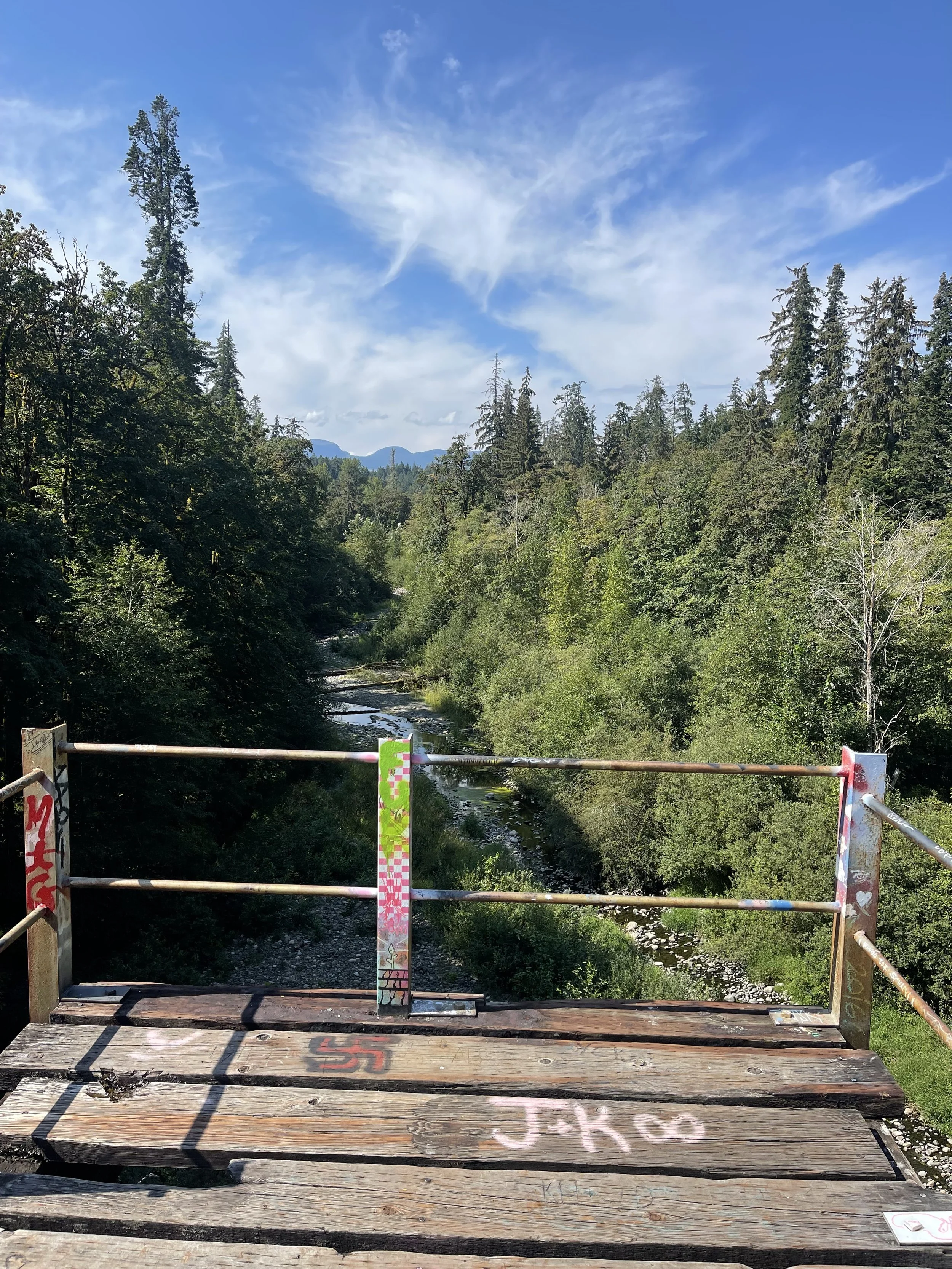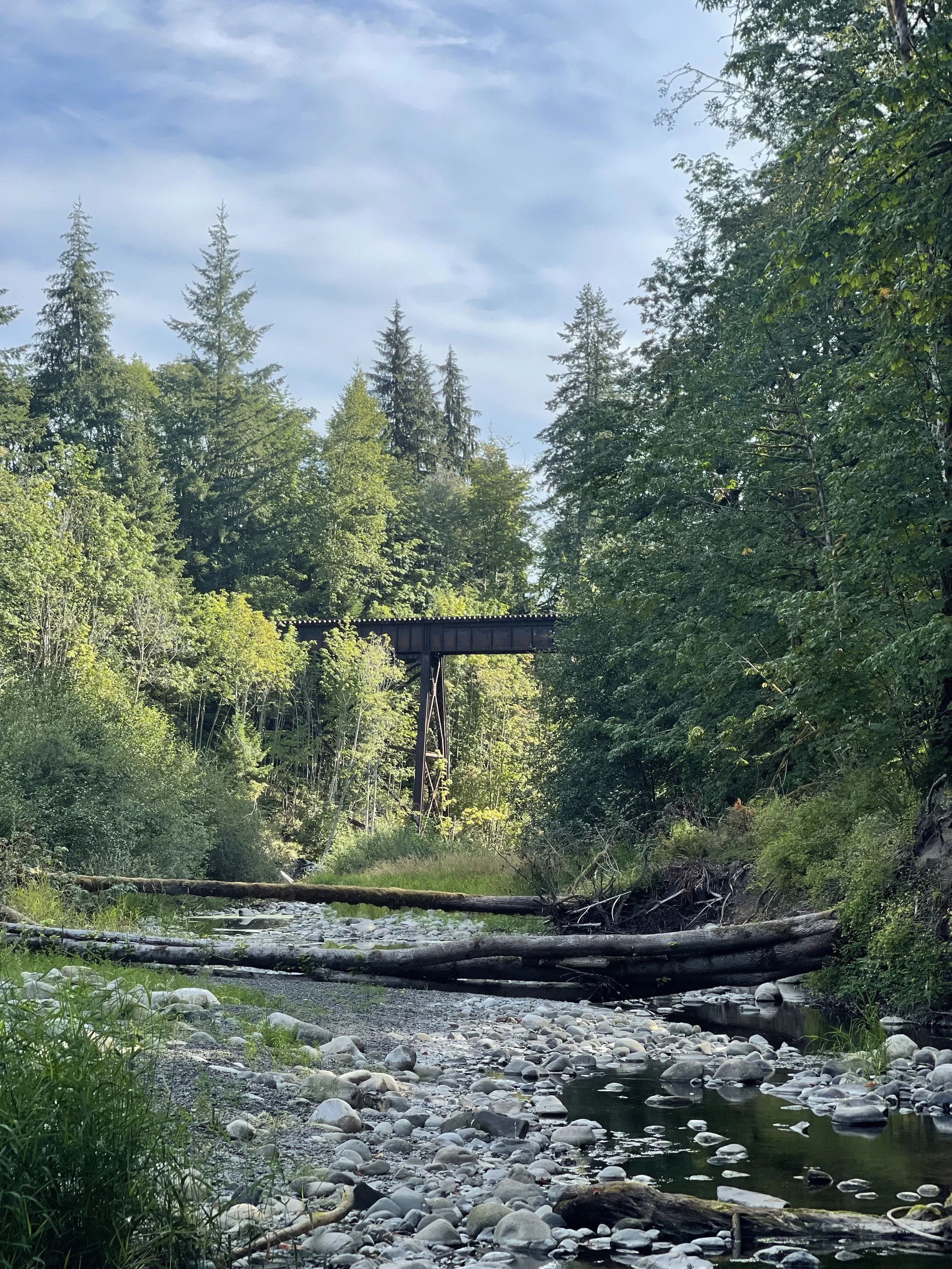Trent River Trestle Collapse:
Vancouver Islands Worst Railway Disaster
Trent River Trestle, Vancouver Island - ©Dylan Phillips Photography
Hundreds of people cross the Trent River every day. It’s not a raging torrent of water by any means. In the summertime it’s hardly more than a creek. If you find yourself driving north on the old island highway between Union Bay and Royston, you’ll hardly realize you’ve driven over it. Most people don’t realize that not far upstream was the site of Vancouver Island’s worst railway disaster in history.
The once vital railroad that connected Victoria to the Comox Valley has become yet another ghostly remnant of the industry that thrived on Vancouver Island. Millions of tons of high-quality coal were brought to port by way of rail. During this time the railroad was a critical means of transportation between the communities of Vancouver Island. As the coal business began to wane halfway through the twentieth century, the E&N Railroad still served our communities with passenger services as well as being utilized for forestry and the transport of other goods. Today it sits in a sad state of disrepair. The cost to bring it back to usable condition has unfortunately been deemed too great by our provincial government.
Railroad Trestle over the Trent River, Vancouver Island - ©Dylan Phillips Photography
Business was booming in 1898, though. The Dunsmuir empire had expanded north to the Comox Valley. Every day men were braving the unsafe conditions of the coal mines, risking their lives to earn a modest living. As coal was hastily extracted from the earth, it was loaded into rail cars and sent south to port at nearby Union Bay.
On the morning of August 17th of that year, a twenty-car train departed from Union, today known as Cumberland. The train was made up of a locomotive, loaded coal cars and one passenger car. Disaster struck as the locomotive, Union Colliery No. 4, crossed over the Trent River. The trestle, only ten years old, gave way under the weight of the locomotive, hurling it into the canyon below. The loaded coal cars and passenger car were dragged along behind it, killing six people and injuring many others.
The disruption to the coal market was felt by James Dunsmuir immediately. He tasked engineers to find a lower point to cross the Trent River and within a week a new trestle was in service.
Ever since I first learned of the Trent River train disaster, I wanted to find its location and hike around the area. Online rumours circulated claiming that the remnants of the original trestle still scatter the river bed. I started by finding the modern day river crossing on Google Maps and marked the location. I cross referenced this with some old maps of the E&N railway that show the original crossing. From what I could see, They weren’t very far from one another.
It was a few years before I finally made my way to nearby Royston with the intention of hiking out to the trestle. I parked near the train tracks across from the old elementary school. I packed up my camera bag and set off south down the train tracks. It wasn’t long before I found myself at the trestle.
Trent River Trestle, Vancouver Island B.C - ©Dylan Phillips Photography
Even today at its lower crossing point, it’s still quite high above the river bed. Crossing the trestle is not for the faint of heart. I’m very comfortable with heights and had no issue walking out to the standing platform halfway along the bridge. It’s comforting knowing that I wouldn’t encounter a train here, as the railway has been deactivated for over a decade. Surveying the canyon in both directions, I saw no evidence of the collapsed trestle. Slightly upstream of the modern bridge is what appears to be the original crossing point. Its grading still evident over one hundred years later.
Standing Platform, Trent River Trestle, Vancouver Island B.C - ©Dylan Phillips Photography
I crossed the trestle on foot and walked the tracks north until I found the point where engineers spurred off the original line to the new bridge. An overgrown trail winds through the original path of the railway.
Crossing the Trent River Trestle, Vancouver Island B.C - ©Dylan Phillips Photography
Old railway grades are easy to spot in the forest by the absence of mature trees. The grade is still fairly intact and the width of the trail is generally a bit less than a road and a bit more than a walking path. Even the height of the tree canopy can give this away. It’s easy to picture a small steam locomotive loaded with coal traversing these historic routes.
From here I was able to hike down a steep switch-back trail into the canyon below. Now on the river bed, I kept my eyes peeled for any sign of the disaster. Splintered rail ties, Rail spikes, fragments of twisted iron. There was nothing that I could find except for some small pieces of coal.
Trent River, Vancouver Island B.C - ©Dylan Phillips Photography
I hiked a ways up stream in case my hunch about the old bridge location was wrong. I got about a kilometre up from the current bridge before the creek bed became too difficult to navigate without getting wet. Returning to the present day bridge, I hike down stream towards the Old Island Highway. Desperate to see around the next bend of the river, I bushwhacked through thick forests of salal and ferns.
Still I found nothing out of the ordinary. Disappointed, I retuned to the bridge and carefully scaled the north side of the canyon until I was back at the top of the bridge. Once again high above the river, I took another moment to reflect on the tranquil scene. For a moment in time the air here was filled with the sounds of cracking timber and twisting metal and the screams of those aboard the train.
Trent River Trestle, Vancouver Island B.C ©Dylan Phillips Photography
While the disaster may not be evident in the Trent River canyon today, the memory lives on in our history books. Given the current state of the E&N Railway today, The Trent River train disaster is likely to remain the worst railroad accident in Vancouver Island’s history.
If you choose to visit this site, do so with the respect that 6 people lost their lives here.







